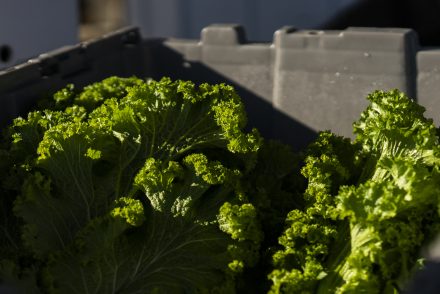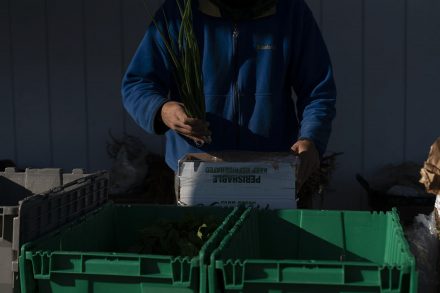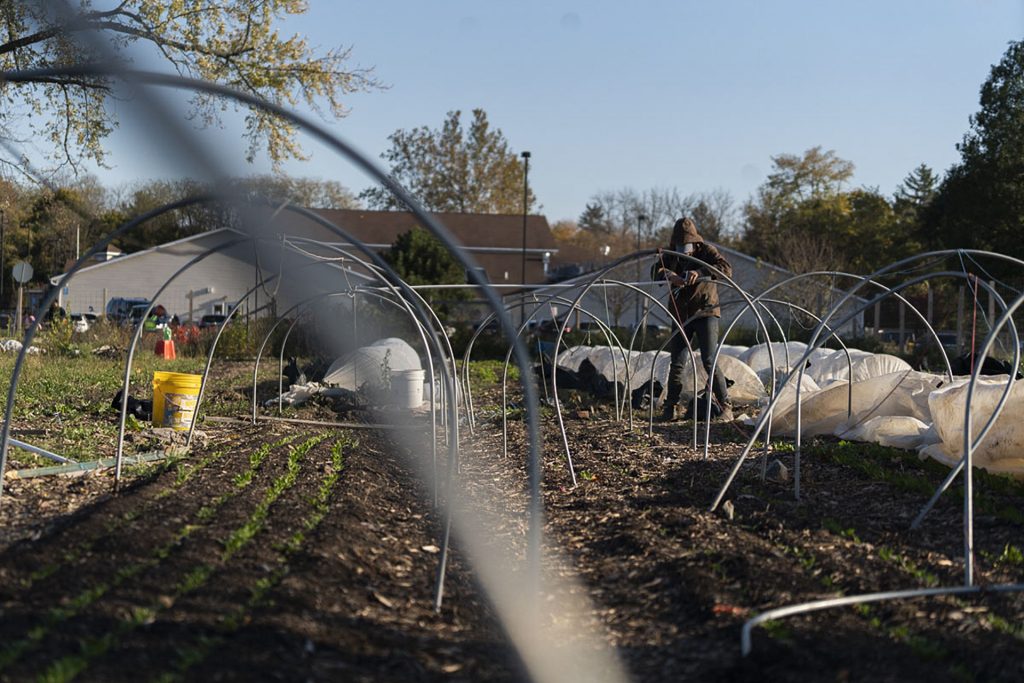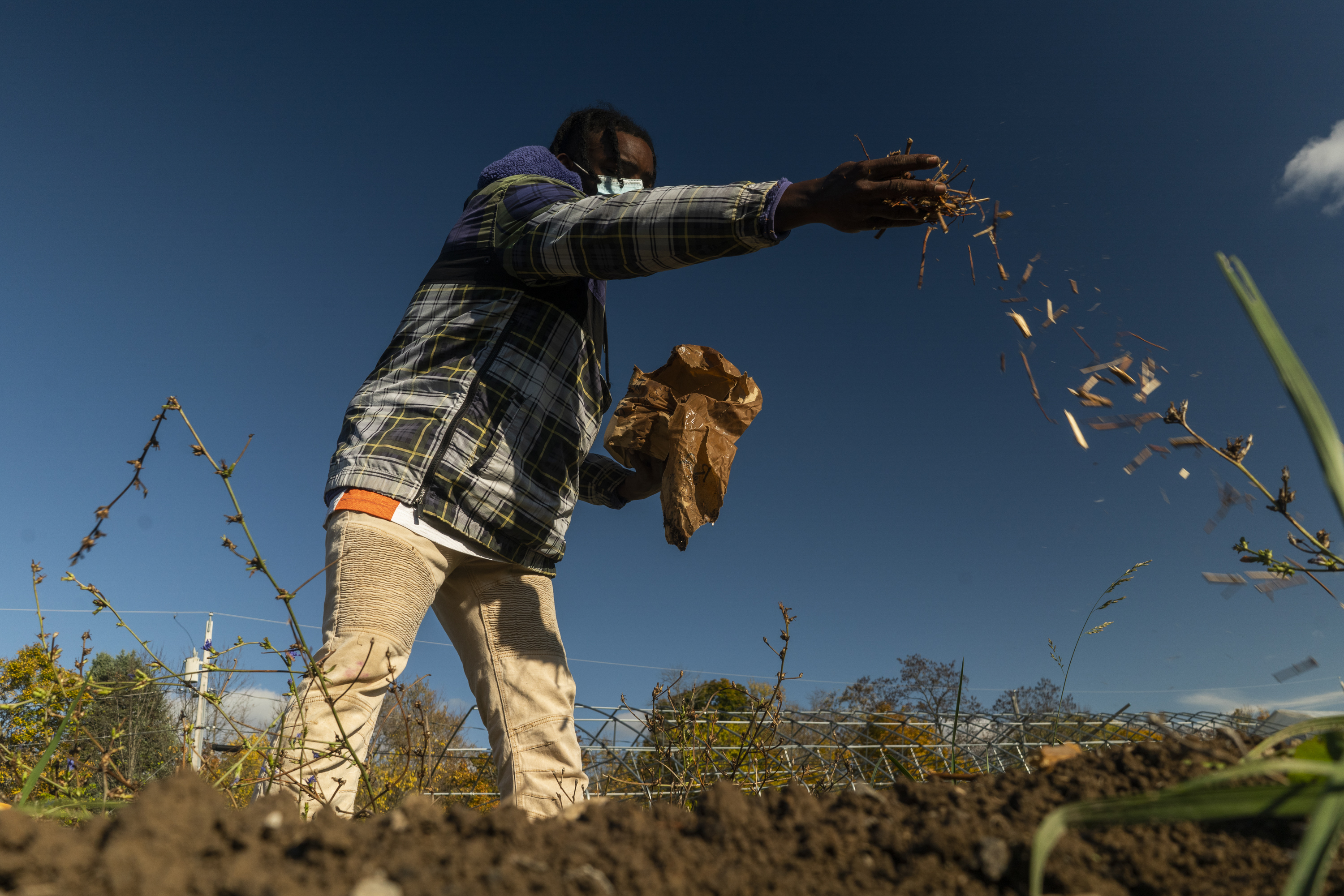Fighting Food Insecurity
Fighting Food Insecurity
With the opening of Brady Market, Syracuse residents are unraveling food apartheid and forging a new relationship with nutrition.

n the building at the corner of Gifford Street and South West Street known for nearly 100 years as NoJaim Brothers Supermarket, a banner hangs on the brown facade. It reads, “Coming soon, Brady Market, more than a market.”
The new market, set to open in May, is seeking to help solve a pervasive issue in Syracuse: food apartheid.
“We’ve never been more disconnected from our food as a society than we are now,” said Kevin Frank, executive director of the Brady Faith Center, who oversees the market’s opening. “We live in these bubbles where some people know these things and others don’t.”
In Syracuse, half of the city’s children live in poverty, nearly one-third of households have no vehicle available, and 31% of households rely on SNAP benefits, formerly known as food stamps, according to a 2017 Onondaga Health County Department report on the city’s food environment. But the issue is deeper. More systemic.
In a predominantly Black community of mixed low to middle-income households, with many single-parent families, the term “food apartheid” explains how a lack of access to healthy food disproportionally impacts Black communities, said Matthew Potteiger, professor of landscape architecture at SUNY College of Environmental Science and Forestry and affiliated faculty member within the Falk College Department of Nutrition and Food Studies at Syracuse University.
“Your zip code determines the hand you’re dealt,” Frank said.
Food apartheid names the race-based discriminatory practices, Potteiger said. Unlike the more common phrase, “food desert,” which suggests that food insecurity is a natural occurrence, food apartheid is a human-created system where some have abundant resources and others do not. To find food in a desert, one just has to know the environment, Potteiger added.
“A food desert does not recognize the rain that falls or the range of resources that people have learned to develop in those areas,” Potteiger said.
The 8,000 square foot Brady Market will holistically address the food access and food sovereignty needs of the community, Frank said. The market is in the Near West Side, within blocks of the Downtown and South Side neighborhoods.


Elisia Gonzalez knows the environment of the South Side food system. Gonzalez, a 2016 Syracuse University graduate, grew up “surrounded by poverty” on Brighton Avenue, a stone’s throw away from Interstate 81. She recalls a lack of grocery stores in her childhood neighborhood.
Gonzalez said many of her neighbors did not have access to cars, and public transportation is “not the best” in Syracuse. A 2018 Syracuse Metropolitan Planning Area study found 21.4% of Centro riders to be low-income, and The Daily Orange reported that the pandemic has shown most Centro riders are transit-dependent. Gonzalez remembers seeing people walking on the busy South Salina Street, arms heavy with grocery bags.
Once, when shopping at a grocery store, security loomed over Gonzalez’s every move, she said. This did not happen to customers in the wealthier Nottingham neighborhood stores, Gonzalez added.
“You don’t see security outside of the front door in Nottingham,” Gonzalez said. “But on the South Side, the security is always watching you. It’s intimidating.”
Communities are perceived as good or bad, Frank said. This perception homogenizes its residents.

There was a string of years where grocery stores would pop up, then close soon after, Gonzalez said. That’s when a grassroots community effort, coordinated by Jubilee Homes, led to the opening of the full-service Price Rite on South Avenue.
The convenience stores around Gonzalez’s neighborhood capitalize on poverty, said Jessi Lyons, farm coordinator at Brady Farms.
“[The stores are] intentionally marketing and marking up food knowing people are going to use their benefits on them,” Lyons said. “They can capitalize on the fact that no one has an option.”
A high-spirited employee of Brady Farms, a 5.8-acre farm on the South Side, seeks to remedy this. Keonna Yearwood, community outreach coordinator for the farm, works to normalize healthy eating habits among some South Siders that were not taught food education, she said.
“We fry things. Over-sautee things. We don’t get nutrition from a lot of the foods that we eat,” Yearwood said.
Yearwood drastically cut her weight once she learned how to cook her favorite soul food dishes in a healthier way. She vowed to educate others who, like her, were not taught.
“We like to talk about health care in this country, but we don’t ever talk about food justice being a part of that,” Yearwood said. “And these systems that create these food justice systems, a lot of the time, keep people out of them.”
Yearwood also works as a personal chef where she conducts virtual classes. Her classes partner with the PGR Foundation, a Syracuse non-profit female youth mentoring program that stands for “Poised, Gifted and Ready.” Founder Debra McClendon, 62, works with South Siders to introduce healthy eating habits.
While at a PGR event, McClendon saw three girls huddled in a corner with a bag of Burger King. The striped box of french fries passed from hand to hand, each girl eating one fry at a time. They shared the rest of the meal this way, meticulously dividing portions. It hit McClendon: these girls were hungry.
Many of the girls’ parents or caretakers are single, work multiple jobs, and are eligible for food stamps, which leaves little time to prepare food between school and events, McClendon said. And when the girls can make food for themselves, it typically comes frozen and wrapped in plastic, lacking in nutrition.
McClendon heard praise of Yearwood’s cooking classes reverberating through the South Side community and saw an opportunity to introduce the families of PGR to healthy eating. When working with families, Yearwood asks how they feel about their health, and if they’re open to trying new things in the kitchen.
Families typically agree to a cooking lesson on one condition: if Yearwood can make the food taste good. Vegetables do not have the best reputation among South Siders, Yearwood said, so she incorporates a vegetable they’re familiar with, like a sweet potato. Once they learn how to make a sweet potato pop with flavor, “a lightbulb goes off in their head,” Yearwood said.
“They’re like, ‘Wow I didn’t know this could taste like this,’” Yearwood said.
After a class, McClendon said “them jokers were happy,” even inviting friends over to make a beet salad.
Generosity and communal thinking run through the South Side. As a measure, church-goers in the South Side area give higher amounts per percentage of income than church-goers outside the area, Frank said. While working at a food pantry on the South Side, Frank noticed that people look out for each other.
“If they got two pies, it wasn’t to store them, it was for their neighbor,” Frank said.

Deconstructing the Divide
The opening of Brady Market is a response to the food security and sovereignty needs of the South Side community, Frank said. Customers will walk into the store and find bargain produce items, a meat-stained, apron-clad butcher, a deli, hot to-go food, and a place to heal, Frank said. Employees will be paid to work on themselves — most hires will be people from the community. “Learning circles” will provide a space for employees to talk about substance abuse, anger management, meditation, and parenting, Frank said.
The community expressed their enthusiasm for the market as a sigh of relief after years of scrounging corner stores and a few grocery stores for food.
“There’s an incredible resilience and tenacity to survive and overcome obstacles that are unbearable and overwhelming,” Frank said.

